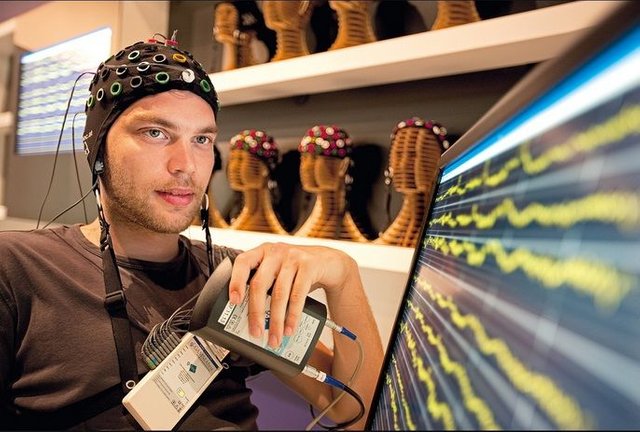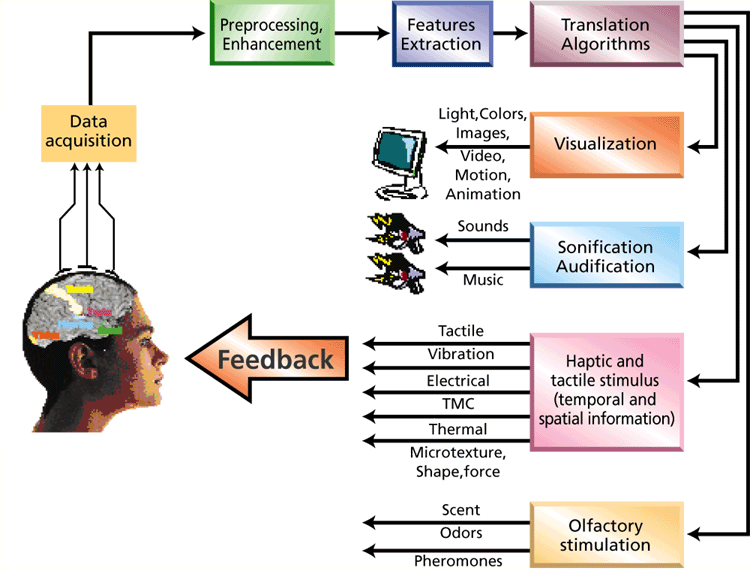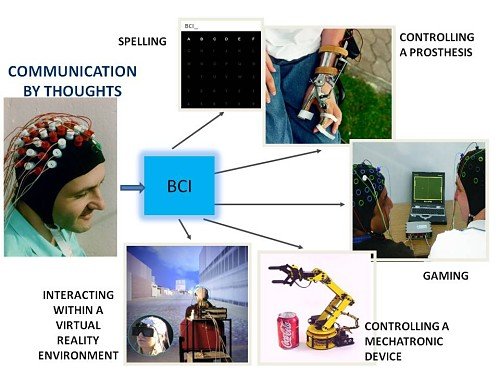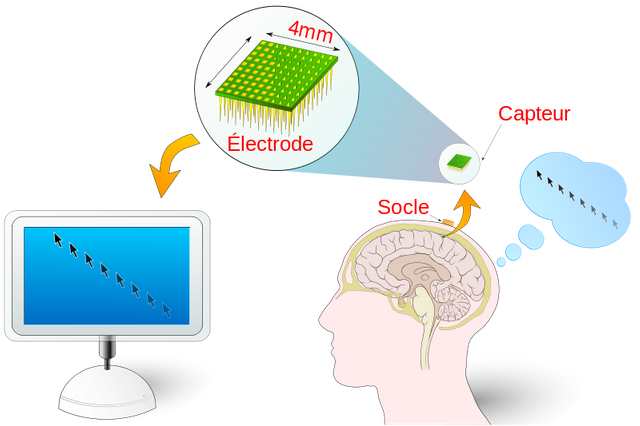Brain-computer interface or how to control things mentally
Nowadays, one of the most popular topics in neuroscience is a Brain-Computer Interface (BCI).
BCI, aka neural interface - a technology that allows to process electrical signals from the cerebral cortex, amplify and transmit them to a computer, then using the processing algorithms they are synchronized with any control device or computer application.

The electrical activity of the brain is read, while a person mentally performs some action. For example, he picks up a chess piece and makes a move (mentally! human hands at this time are at rest). Computer tries to isolate the EEG (Electroencephalography) patterns of movement from the electroencephalogram - common elements of the structure of brain activity specific to the movement element.

Then, the electrodes are connected to the device you want to manage: a prosthetic, exoskeleton, quadcopter, car, wheelchair. And you can start to think the same way about the movement. The computer already knows the movement patterns, but at this stage, it gets feedback - the movement itself. It is already possible to adjust it a little bit and thereby "train".
Methods of preparing
- EEG cap is put on the head of the operator.
- Еhere is no need to retrain the classifier after each new dressing of the cap.
- First, a classifier must be trained a neutral state. It is not a state of relaxation, but a kind of average in which the noise is removed.
- Education is the formation of such states of mind that the classifier is able to recognize.
Practical Use
After training, a classifier will produce discrete commands. These commands are then used to control a variety of visualizations (programs, games) or technical devices
There are several mechanisms that create a more stable and advanced meta commands:
- Simple commands: in the inlet and the outlet (for example, for real-time control of quadcopters)
- Linear command: the command is formed only after getting a certain number of identical consecutive commands.
- Accumulator: The command is formed by the accumulation of a specified number of teams.
- Word: battery with several cells. It allows you to increase the number of meta-commands from a limited set of commands.

Application in the life
- A real breakthrough in the Brain-Computer interface occurred in 2012 when John Donahoe has published an article describing the case when completely paralyzed patients in whose body 96 electrodes on 1 "chip" 4x4 mm were implanted. With the help of these electrodes, the woman was able to train prosthesis so that the robotic arm took a container of water and brought it to the mouth of the operator.

- Swiss researchers from the High Polytechnic School in Lausanne created a bionic prosthetic finger that feeds back information about the surface texture. Artificial finger consists of a silicone prosthesis, and the sensor chip that converts the sensor signals into pulses, "understandable" by nerves.
In the residue of the left hand of a tester were implanted electrodes connected to the peripheral nervous system. By connecting the prosthesis to electrodes, tester felt the specially prepared plastic surfaces. As a result, he was able to correctly detect where the smooth surface is and where the rough in 96% of cases is.
You can also watch this video and see how a person could play World of Warcraft with a mental control
Further developments of BCI systems will be based on a deep study of the neurophysiological properties and features of "behavior" of the relevant areas of the brain. This will significantly expand the range of management commands.
Technology also develops. Now there is a development of new, simpler and more convenient for patients and users sensor electroencephalogram technologies and create contactless electrodes for this purpose so we would see a great process in the next few years.
Follow me, to learn more about popular science, math and technologies
With Love,
Kate
Obviously this type of technology has very scary and real implications that are negative as well. Implanting False memories, turning a person's brain off putting them to sleep, decoding a person's thought's remotely. This type of brain interface chip or DNI as it is more commonly called, in the current system we live in, is not a good idea. Especially when the bankers are talking about it like this, In my opinion....
Being able to control a prosthesis is very exciting to me! That will change lives all over the globe and give them back a piece of life they lost!
That should give a second chance to disabled people. So Yes, this technology is extremely exciting
This is fabulous. I've become fascinated by the subject of neuroscience in general, and neurofeedback and brain-computer interfaces specifically. Do you (or does anyone) know of places you'd recommend studying/working in/investing in these subjects?